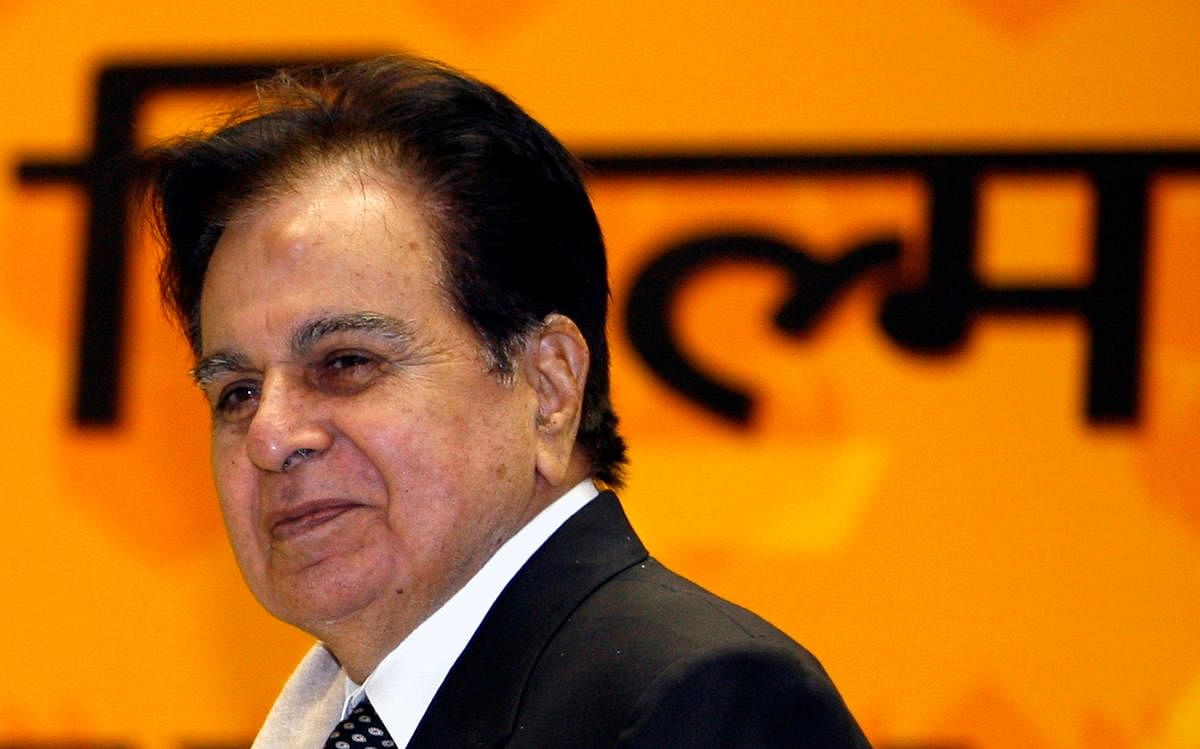
With the death of Dilip Kumar, Indian cinema has lost its biggest ever star.
I use the term ‘Indian cinema’ rather than ‘Hindi cinema’ here without implying the lower importance of MGR, NTR, Uttam Kumar or Rajkumar. All of them were huge in their appeal and were truly Indian but they essentially addressed local constituencies.
Among the cinemas of India, only the mainstream Hindi film has addressed a pan-Indian audience, which is why it uses a non-literary Hindi understood across India, from Kerala to the Northeast, and even by audiences with a vocabulary of only a dozen Hindi words.
Dilip Kumar attained prominence immediately after Independence when Indians did not really know what was ahead of them. He played an existential hero beset by doubt as in Babul (1950) and Jogan (1950). He used a kind of method acting uncharacteristic of Indian cinema in which characters are stereotypes. Dilip Kumar’s performances are revolutionary compared to those of Surendra and Ashok Kumar, reigning stars at the time.
In SU Sunny’s Babul, he plays Ashok, who finds a job as a postmaster in a village where the daughter of a zamindar and the daughter of a postman (Nargis) court him. In a film in which everyone corresponds to type, Dilip Kumar is the only one who does not fit in. If ‘postman’ is read as working class, ‘zamindar’ as feudal India, and ‘postmaster’ as bureaucracy, Ashok’s uncertainty could represent the effect of contrary pulls on the officers of the state. The Hindi film sutured cultural differences from before 1947 and allegorised the social history of the nation, albeit covertly.
If one is telling a story to a child, one peppers the story with references to the child’s own experience. In the same way, films draw audiences by what they have in common, which is the social experience of the time.
The films may not be nationalistic or patriotic but they allegorise the topical. To give a startling example, Padosan is about a group of North Indians being anxious that their chosen Hindi-speaking woman has fallen under the influence of a bald South Indian. A friend asked me to interpret this after listening to my theories, and when I saw the date of the film (1968) it was in the period when Indira Gandhi, as prime minister, was seen to be under the influence of the Syndicate, with the bald Kamaraj at its helm!
The thing about Hindi stars is that since their roles are so tied to an allegorical purpose, they need to reinvent themselves since the historical moment when the persona was created has passed. Dev Anand, Shah Rukh Khan and Salman Khan all went through this. Dilip Kumar must have faced this dilemma when India stabilised politically and the existential hero became irrelevant, although there were several more from this mould — like Footpath, Jogan and Deedar. But he still did Devdas for Bimal Roy in 1955 in which he honed the Babul role to meet the demands of a literary adaptation.
Bimal Roy was not a maker of popular films and he was more interested in film as art. When he got Dilip Kumar to play Devdas, Dilip did it very differently from Saigal or P C Barua, who had done it earlier. The earlier Devdas characters were not weak men as much as emblems of male weakness — in tune with the cinema of the time, which also produced their converse, strong women, in Sant Tukaram and Hunterwali. Dilip Kumar played Devdas, not an emblem of weakness but a weak individual, perhaps one of the greatest roles in Indian cinema. After this, he was forced to change his acting style, and the ebullient rustic young man of Naya Daur (1957) and Ganga Jumna (1962) emerged. He had already played the extrovert role in Aan (1952). These characters are not individuals but types.
Among Dilip Kumar’s mature roles, the one that stays strongest in my mind is the police inspector from Ramesh Sippy’s Shakti, which I think is Sippy’s best film, and casting Dilip opposite Amitabh was a coup of sorts. That Amitabh came across reasonably speaks well of him because it was Dilip Kumar he had to upstage. Other roles like Subhash Ghai’s Saudagar (1991), while being ludicrous, still drew us because of him and Raaj Kumar. But I heard from a friend that on the sets of Saudagar, Dilip Kumar called a young actor — with higher education and Bollywood ambitions — aside and told him to stay away from acting. This could give the reader an idea of the trajectory of Hindi cinema’s national role in India.
(The writer is a well-known film critic)